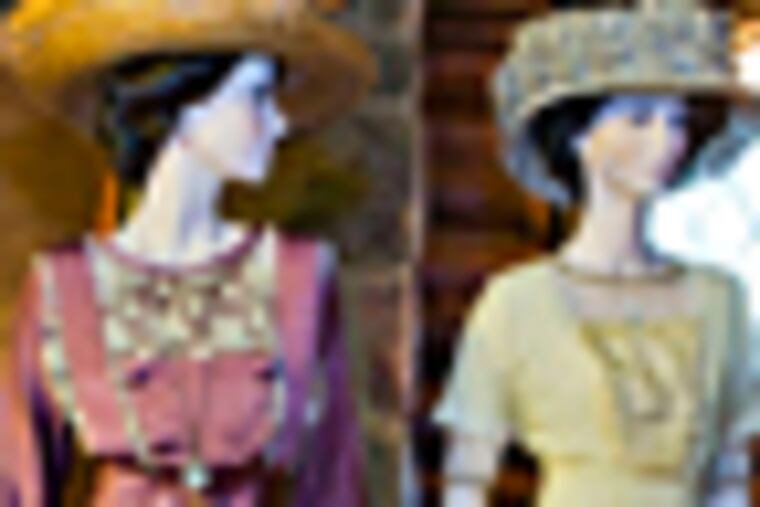Realistic mannequins enliven costume exhibit
PARSIPPANY, N.J. - A unique costume exhibit in New Jersey offers visitors an up-close experience of what it might have been like to be female and live in an upper-middle-class household at the turn of the 20th century.

PARSIPPANY, N.J. - A unique costume exhibit in New Jersey offers visitors an up-close experience of what it might have been like to be female and live in an upper-middle-class household at the turn of the 20th century.
The house, in this case, is the former estate of Gustav Stickley, a major figure in the American Arts and Crafts movement. It's now the Stickley Museum at Craftsman Farms in Parsippany.
The exhibit, "Styling an American Family," running through Jan. 6, features 32 female and two male mannequins arranged in groupings throughout the two-story log house depicting happy and celebratory vignettes: a wedding, a party, playing games, readying for a tennis match, packing trunks for a trip, trying on dresses after shopping.
What makes this exhibition special, apart from the beautiful setting and environment of the 1911 house, is that visitors can come right up to the mannequins, all with beautiful natural features and realistic poses that reflect the activities.
No glass displays here. These mannequins inhabit the house as if they were true residents.
And they are not so much representative of Stickley's wife and five daughters and wife as they are of an upper-middle-class American family and what it might do and wear in the early 1900s. The popular shirtwaist blouse and walking skirt, tailored two-piece suits and white cotton lingerie dresses are among the typically American looks shown.
The museum collaborated on the exhibition with Syracuse University's Sue Ann Genet Costume Collection, which also provided the mannequins, said exhibit curator Jeffrey Mayer, an associate professor and coordinator of the university's fashion design program.
The Craftsman Farms exhibition covers the period 1909 to 1914, from the year the Stickley family moved into the house from Syracuse, N.Y., until the start of World War I.
The time period was chosen, Mayer said, because "it represents a specific 'look' in the history of fashion," he said. "Clothing became softer with lowered necklines and oriental cuts to the sleeves; hems also began to rise."
The use of realistic-looking mannequins, rather than static or headless versions, was deliberate.
"Once we realized that the goal was to discuss social life at the Farms during this era ... it became obvious that we needed realistic mannequins to portray the specific activities which represented the period," Mayer said.